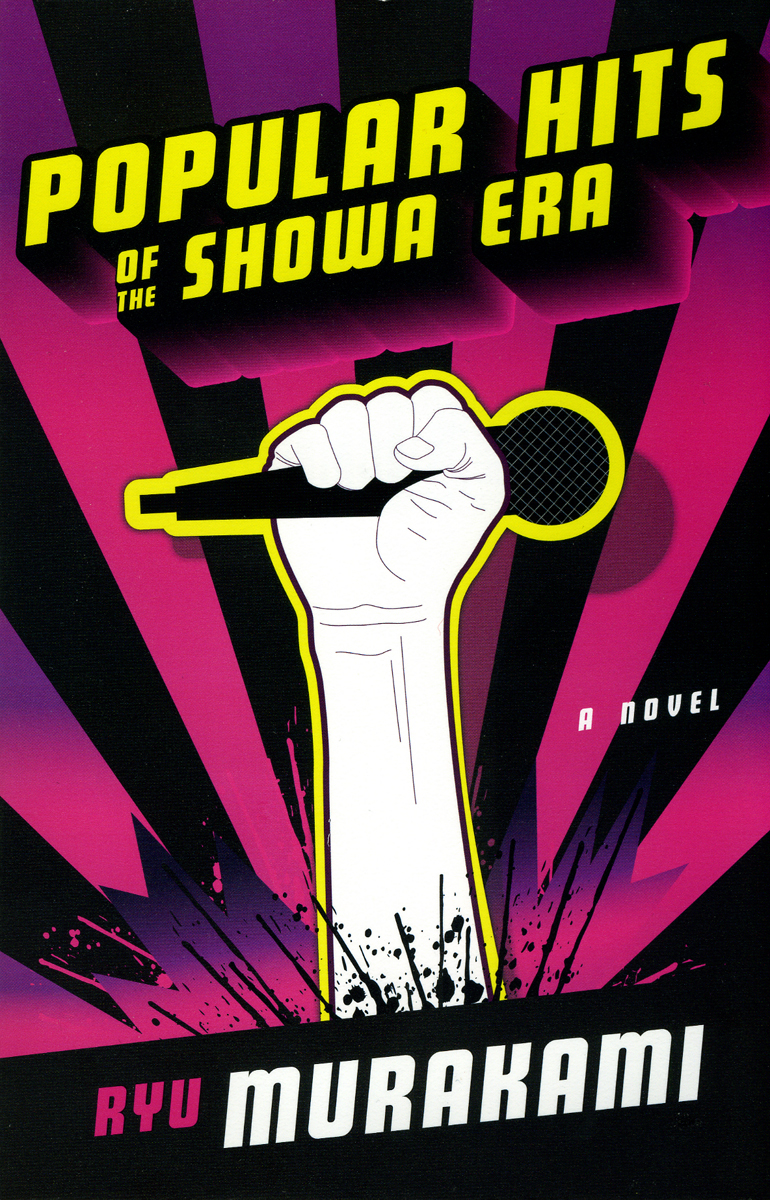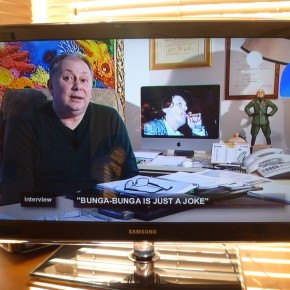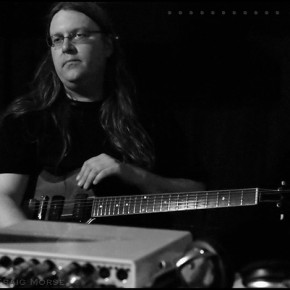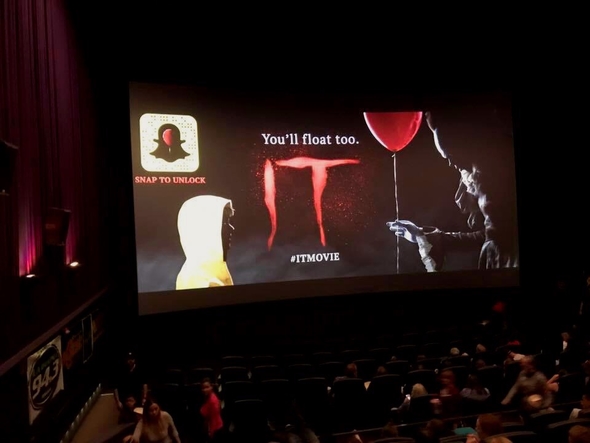Ryu Murakami’s Popular Hits of the Showa Era, just released in English translation, has a plot that is both straightforward and surreal. Six single men in their twenties, all social outcasts touched by madness, band together to form a karaoke club. Six single women in their thirties, similarly cut off from society but much less demented, do the same. When one of the men randomly assaults and murders one of the women, a grisly chain reaction ensues, turning these outwardly unassuming ensembles into de facto gangs worthy of the American inner city.
Because the story is written for comedy, with words and deeds exaggerated to the point of absurdity, the violence can feel mechanical. It’s as if the characters appropriate for a farce suddenly found themselves in the plot of a revenge play without fully grasping the consequences, A Midsummer Night’s Dream that soured into a nightmare to rival Hamlet. There’s humor in that dislocation – we aren’t conditioned to take the “battle of the sexes” so literally – but ample horror as well.
These days, Murakami is probably best known outside of Japan for writing the novel on which the hit film Audition was based. That’s why the back cover of Popular Hits of the Showa Era emphasizes that it, too, was made into a “cult Japanese film” and includes a blurb from Bookforum praising Audition. Clearly, there’s a sizeable worldwide market for Asian gore that Murakami’s American publisher is keen to exploit.
But while it makes sense to subsume both novels under that sexy rubric – the depravity they depict is hardly standard book club fare – doing so threatens to deprive them of their cultural significance. Because, although he is no stranger to horror, Murakami uses it as a means rather than an end. Like Tokyo Decadence, the landmark adults-only film that he both wrote and directed, Popular Hits of the Showa Era is clearly working on multiple levels. While some scenes are meant to unsettle readers and others to make them laugh, they are invariably communicating other messages that complicate initial impressions.
To be sure, neither Popular Hits of the Showa Era nor Audition will disappoint readers who seek the peculiar satisfaction that comes with being simultaneously repulsed and stimulated, the involuntary responses that make horror the most physiologically intense of genres. Indeed, Murakami possesses a remarkable gift for breaching the dam that divides the mind from the body. His prize-winning first novel, Almost Transparent Blue, is filled with scenes of drug-fueled sexual dissolution that make the skin crawl, though it could hardly be classified as “horror”.
Audition uses the same techniques more generically, though with no less effectiveness:
She would become intimate with a man and simultaneously begin forging a plan to cut off his feet should he prove to be just like her stepfather. In her teens, she’d only dreamed up the plans and never carried them out. She didn’t have a proper tool, for one thing. It was while watching a cooking show on TV that she’d discovered the wire saw—a thin steel cable with teeth, and a ring attached to either end. The TV chef had used it to cut effortlessly through a ham on the bone, saying that there was simply no other tool to match it for this sort of task. The wire saw had made everything possible .
In a way, the absence of gore in this passage makes it more disturbing than a straight description of the character’s do-it-yourself amputations would be. By making us imagine the horror for ourselves, with the help of the vivid “ham on the bone” analogy, it makes us complict in our response.
With Popular Hits of the Showa Era, Murakami takes a different approach. There are plenty of scenes, including one in which an amputation is proposed, that directly evoke a visceral reaction. But he also regularly describes his characters having this sort of reaction, thereby distancing readers from the disturbing content. One minor character in the novel, an amiable witness to a killing, is described as being an otherwise ordinary junior college girl whose face has an astonishing power to nauseate:
From their temples, the drops of greasy sweat slid down the hair tucked behind their ears to the nape of the neck and around to the base of the throat, finally soaking into the silk of their blouses. This sweat seemed many times heavier—hundreds of times heavier—than the sort one produces when in a sauna or playing tennis, and it made a deep, rumbling sound as it rolled past their ears. Another five minutes face-to-face with her, Suzuki Midori thought, and I won’t even know who I am anymore. The girl wasn’t tremendously ugly or disgustingly unkempt or anything like that. It was just the vague asymmetry of her eyes and face that seemed to suck energy like a black hole.
This is a classic description of the physiological response caused by horror. Significantly, it is motivated by a “vague asymmetry” rather than one of the truly horrific killings that occur throughout the novel. This clues us in to the fact that Murakami aspires to something different than dime store shock and awe.
Although this passage is funny, Popular Hits of the Showa Era makes too much of the junior college girl’s face, here and elsewhere, for it to be read just for laughs. Because the scenes in which she appears are a temporary respite from the revenge plot, they stand out in a way that invites interpretive license. The vertigo her face inspires in other characters suggests the force with which it pulls meaning towards it. While this may drive those characters to feel that their own lives are meaningless, it also makes it logical for readers to regard the face as the novel’s most important trope.
There are a variety of plausible readings, most of which can coexist with one another. The most compelling situate the novel’s fairly self-contained plot – aside from the girl, neither karaoke club has much interaction with the outside world – in relation to Japanese history. To give one example, it can be argued that the novel conjures a world, of dysfunctional males with no hope of matching their fathers’ achievements and depleted women who take it for granted that their fate has already been decided, in which the superficiality of the postwar boom is reimagined as a kind of mask concealing the face modern Japan was born with. From this perspective, Japanese attempts to fuse the values of East and West, imperial ambition and democratic procedure, purity and cosmopolitanism resulted in a “vague asymmetry” that could never be fully overcome.
At first glance, Ryu Murakami would seem to have little in common with the twentieth-century Japanese novelists best known in the West, Yukio Mishima, Yasunari Kawabata and Junichiro Tanizaki. Whereas their mature work is suffused with melancholy over what Japan lost in the passage to modernity, Murakami takes the appurtenances of consumer society for granted. He largely avoids invoking the rituals and artifacts that lent themselves to the fetishization of Japanese otherness, both domestically and abroad. Instead of longing for the security of tradition, his characters struggle to free themselves from the prison of habit.
This is also reflected at the level of style. It is hard to gauge how “literary” Murakami’s original prose sounds from Ralph McCarthy’s pop-forward translation. The economy and flexibility possible in Japanese, with its Chinese characters and multiple phonetic alphabets, permit effects of both condensation and dilation that are almost impossible to achieve in English without abandoning conventional grammar and syntax. But what the translation does amply demonstrate is that Murakami has no interest in crafting sentences of timeless beauty. In a sense, the ugliness his prose communicates is a function of how thoroughly grounded it is in the banalities of contemporary existence, from the fast food the characters wolf down to the songs they remember fondly from their childhood.
Seen from another angle, however, these intransigently hideous details – so antithetical to the sort that Mishima, Kawabata and Tanizaki favor – actually seem to bind Murakami more closely to the twentieth-century Japanese literary establishment. Because, while he may be attempting something new and different, he seems a little too invested in its oppositional character to keep the past at bay.
The fault line that lurks beneath the surface of Popular Hits of the Showa Era, the one that gives the novel itself an impression of “vague asymmetry”, encourages us to rethink his entire oeuvre. Just because Murakami is deeply skeptical of traditional values, that doesn’t mean he has no interest in the past. Like his namesake novelist Haruki Murakami, better known in the West, Ryu is a Baby Boomer who was deeply influenced by the anti-authoritarian spirit of the counterculture. And despite their obvious differences – Ryu is more sexually explicit, for one thing – the two authors share a preoccupation with exposing the unseemly realities lurking beneath the surface of everyday Japanese life.
Their shared refusal to fetishize tradition has led them both to be classified as “postmodern” authors. But this move takes on a different aspect within the context of Japanese literary history. The affection for old ways and things that runs through the work of Mishima, Kawabata and Tanizaki is very difficult to separate from the anti-democratic and xenophobic nationalism that pushed Japan into World War II and which, even now, continues to exert a powerful influence on the way decisions are made there. Rather than worrying about what comes after modernity, then, both Murakamis have sided with modern values against a tradition too closely tied to reactionary politics. Considered in this light, their work might be considered a contribution to what Jürgen Habermas calls the “unfinished product of Enlightenment.”
The title Popular Hits of the Showa Era is particularly interesting in this regard. Although the songs referenced in the novel all date from the postwar boom in which the characters grew up, the period technically extended for the entirety of Hirohito’s time as emperor, all the way from 1926 to 1989. Commentaries on modern Japan often remark how odd it is to classify this half century as a single era, given the huge differences between prewar and postwar conditions. But if your politics incline you to perceive the troubling continuities that can even extend across a massive rupture, as was the case for many German and Japanese Baby Boomers, the capaciousness of the term “Showa Era” is actually a boon.
In a way, the junior college girl’s horror-inducing face, with its “vague asymmetry”, is a figure for the Showa Era itself. Its two halves may not match up properly, but they still make a troubling whole. Although confined to private life, the extreme violence in the novel is nonetheless abetted by the legacy of prewar Japanese militarism and the American occupation that drove it into the shadows. Murakami doesn’t bog down his plot with a lot of conjecture. Popular Hits of the Showa Era is no philosophical novel. But his tendency to caricature, coupled with the way the story builds towards a truly horrifying climax, invites allegorical interpretation.
It should be noted that, while English-language readers are only just now getting the opportunity to read the novel, it was published in Japan back in 1994. That means that Murakami wrote it in the immediate aftermath of the Showa Era’s conclusion, which also happened to be the time when Japan’s postwar boom came to an end. The novel chronicles the diminished aspirations and constrained resources that typified the nation’s “Lost Decade” of the 1990s. His characters may turn to violence because they are desperate to give their lives a sense of purpose, but their existential despair isn’t just a personality defect. Their pessimism is grounded in brute historical fact.
When they recall popular hits of their childhood, then, they are implicitly transporting themselves back to a time when the future of Japan seemed a lot more hopeful and dreaming big was possible even for the little man and woman. That’s why the timing of Popular Hits of the Showa Era’s appearance in English is so tragically appropriate. For, just as the early 1990s were shadowed by one national crisis, 2011 will forever be remembered in relation to another.
There is considerable debate about whether the Lost Decade really came to an end around the turn of the millennium. Some argue that the term should be extended to include the last ten years as well. But whether Japan ever managed a true recovery or not, it’s clear that life there had stabilized. As the memories of the boom’s ignominious end faded, people became used to living more modestly. And, because of the nation’s high savings rate and lack of true poverty, most Japanese were insulated from the full force of the collapse.
Now Japan has taken a radical change for the worse. Weeks after the massive Tohoku Quake, a great many people are still homeless. More still have lost loved ones and livelihoods. And the appearance of tidy efficiency that Japanese officials worked so hard to cultivate has been revealed to be a bane. Even now, representatives from TEPCO and the national government are downplaying the severity of the nuclear crisis at the severely damaged Fukushima plant. They continue trying to save face internationally, but at the expense of the openness needed to deal with the situation. Once again, the “vague asymmetry” that Murakami pinpoints can be witnessed in the disjunction between how the nation seems and how things really are beneath the surface.
Enough stories of stoic heroism have circulated since the Tohoku Quake to rekindle a little of the national pride that had been ebbing since the end of the Showa Era. Some have suggested that the disaster could ultimately help redirect Japan towards a more positive course, much as World War II ultimately did. But it’s worth remembering what happened in the aftermath of the cataclysmic Great Kanto Quake of 1923. The Tokyo Metropolitan Area was quickly rebuilt. However the financial impact of the disaster was sufficient to push the Japanese economy to the brink years before the Wall Street crash of 1929. Indeed, part of the reason Japan didn’t feel the effects of the Great Depression as acutely as many Western countries was that people had already reconciled themselves to a pessimistic worldview.
It’s no accident that reactionary extremism – and the concomitant suppression of the Left – increased enormously after the Great Kanto Quake. Thousands of Koreans may have been killed in its immediate aftermath, due to rumors that they were stealing, starting fires and poisoning wells. While the mob violence was eventually brought under control, the paranoia that had animated did not dissipate. As in the Weimar Republic, anxieties about an enemy within were brought to a fever pitch.
Given the much greater access to global media these days and the high standard of education in Japan, it seems unlikely that the Tohoku Quake will result in an analogous rightward shift. But as recent developments in Europe and the United States make clear, isolated acts of terrorism can lead to a massive overhaul of civil society. Why couldn’t a disaster that caused far more damage than all the attacks of Al Qaeda combined yield similarly dramatic results?
Significantly, Popular Hits of the Showa Era ends with a homegrown terrorist attack that makes the destruction of the World Trade Center seem almost paltry by comparison. This is alternate history, of course. While Tokyo did suffer the baffling nerve gas attack in its subway system by the Aum Shinrikyo cult in 1995 – ably documented by Haruki Murakami in his non-fiction book Underground – nothing came close to what happens in this novel. Until now, that is.
Because even though the Tohoku Quake was obviously a natural disaster, its impact was greatly magnified by human decisions. By committing to nuclear power, in spite of what transpired in Hiroshima and Nagasaki at the end of World War II, the Japanese government demonstrated the hubristic conviction that it could effectively manage risk. But the harsh reality is that no amount of planning can prepare a society for the truly exceptional event.
In fact, this is one of the crucial lessons of Popular Hits of the Showa Era. Despite the fact that members of the rival karaoke clubs kill each other in increasingly distinctive ways, the authorities never realize what is going on for the simple reason that it lies too far outside their expectations. At one point, the women use a rocket launcher left behind by American forces to use against their rivals. Even though the provenance of such an exotic weapon should be easy to determine, the police literally don’t have a clue who did the deed or why.
Towards the end of the novel, one of the two remaining members of the men’s karaoke club, who acts crazy under the best of circumstances, shares a “strangely coherent reminiscence” with his partner in crime:
I was always a good kid, and my father was a good guy too, so we never had any big problems when I was growing up, but when I was in middle school, I don’t know how to explain it exactly, but the fact that we never had any problems started to feel like a lot of pressure on me, because I wasn’t just like him—we were different—but I didn’t know how to get that across to him, and it bothered me a lot, I really worried about it, and I still remember one night, him and me and my mother, we were watching this comedy show on TV—it might’ve been The Drifters—and one of the comedians came out with some stupid gag that wasn’t even funny, just some dumb catchphrase like, ‘Oops, I’m a ba-a-a-a-ad boy!’ or whatever, and my father starts laughing like crazy, and as he’s laughing he’s tapping me on the head—tap! tap! tap!—and I told him not to do it because it hurt, and he’s like, ‘Oh, don’t be such a grouch,’ and keeps on tapping, and finally I knocked his hand away and shouted, ‘STOP IT!’ at the top of my lungs, and my mother’s, like, stunned, and my father gets all flustered and goes, ‘What got into you all of a sudden? You’re not going to let a little thing like this bother you, are you?’ and he raps me on the head again, only harder, trying to make a joke out of it, like we’re just playing around, and that’s when I felt myself snap. It was definitely a physical sensation, and I knew I was just about this close to stabbing him with a kitchen knife or bashing his head in with a metal bat or something, but instead I said, Fucking hell!
Given the awesome violence that this man helps unleash a little later, this passage takes on a great deal of significance. Like the junior college girl’s one-of-a-kind face, it provides readers with a means of interpreting the novel as a whole.
What Murakami describes here is a kind of earthquake of identity, the moment when someone experiences a massive rupture with her or his surroundings and feels driven to act in a dramatically different way. The implication in this passage is that stress had been building up for a long time under the outwardly sanguine rule of the belief that “we never had any problems.” But then something snapped. It’s not uncommon for teenagers to feel this way, since part of becoming an adult means breaking free of one’s parents.
The most disturbing aspect of this reminiscence is that the break it describes ultimately failed to release sufficient pressure to prevent further ruptures. On the contrary, the asymmetry to which this father-son conflict testifies, the sense that there was a misalignment that needed to be addressed, persists throughout the novel. Everything is out of joint and nothing seems capable of repairing the damage.
The men and women of the rival karaoke clubs may find solace in escaping Hamlet’s straightjacket, taking decisive action for once in their lives, but most of them end up dead. Shouting “Fucking hell!” only defers the problem; murder replaces it with a bigger one. For all its humor, Popular Hits of the Showa Era is a deeply depressing book. But Murakami does at least hold out the prospect of a more effective approach for coping with fractured lives. Instead of seeking a way out, as the characters in his revenge plot do, perhaps we should look for a way back in, recognizing that ruptures and continuity frequently go hand in hand.
However horrifying “vague asymmetry” may be, we would do better to face it squarely, acknowledging that the seemingly solid ground on which our individual and collective identities are anchored is shot through with cracks and fissures and rife with pressure points where further fracturing is possible. In witnessing the carnage left behind by the men’s final act of revenge, the sole surviving member of the women’s karaoke club conveys the human cost of forgetting this crucial insight. “At first she thought it was either an earthquake or a nuclear war. . . The town was in ruins. Burning automobiles sent up whirling billows of smoke, and charred bodies lay scattered over the ground as far as the eye could see. “ Whether it’s nature or culture that reveals the fragility of existence, we would be wise to take the lesson to heart.





